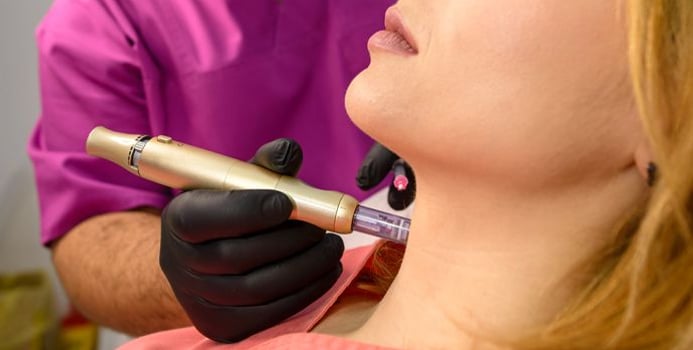The vampire facial has nothing to do with Halloween, although it does leave the face with a scary bloody appearance that’s enough to scare anyone on a night out.
This painful skincare treatment has been enjoying it’s moment in the headlines, partly because it’s one of the strangest ways to rejuvenate your skin, but also because of the celebrity endorsement of it, and Kim Kardashian was arguably one of the first people to bring attention to this unusual treatment.
She has since changed her tune, telling fans on her app, she regrets getting the treatment. She said, “A few years ago, I heard about a 'vampire facial,' and I was so intrigued.” But when she signed up for the treatment she was pregnant and therefore could not get any painkillers or numbing cream (and if doctors recommend this, you know it’s going to hurt). She continued, "It was really rough and painful for me. It was honestly the most painful thing ever! It's the one treatment that I'll never do again."
Now, you’re intrigued too, right? What the heck is a vampire facial? The simple explanation is it's a facial that uses your own blood to promote cell growth and collagen. The end result is supposed to be younger looking skin.
The process, according to Vox, goes a bit like this: blood is drawn from the client’s arm, and then the plasma and the platelets from red blood cells are separated to create a liquid platelet-rich plasma or PRP. The PRP is then applied to the skin using microneedling techniques, essentially puncturing the skin with a series of little needles.
View this post on Instagramלקראת שידור חי של אקס פקטור, הערב ב21:00, הלכתי לדר פולה לטיפול פנים. "טיפול ערפד" תבינו לבד...
But should you add this beauty treatment to your normal routine? The answer appears to be no because there is no overwhelming evidence to suggest it works, Dr. Darren McKeown told The Independent. He said, “The theory is that the platelets and growth factors initiate a healing response which, over time, rejuvenates the skin. It is controversial however because the evidence used to show that it works is conflicting at best.”
[Image via Shutterstock]



